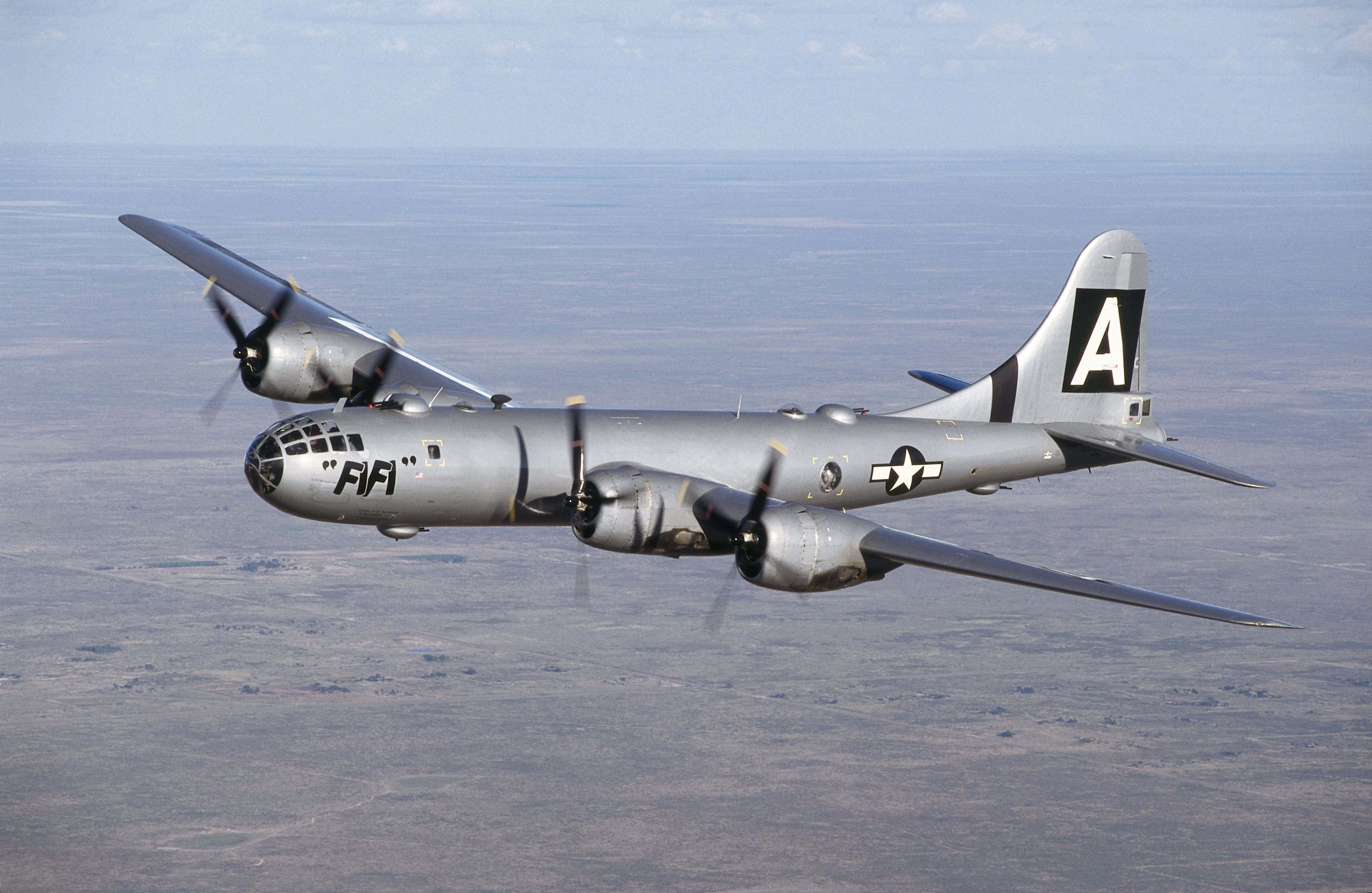Boeing B-29 Superfortress
The Boeing B-29 Superfortress was one of the most advanced aircraft of World War II and beyond. Introduced in 1944, it featured pressurized cabins, remote-controlled gun turrets, and one of the longest ranges of any bomber of its time.
It was the primary heavy bomber used by the United States against Japan and famously dropped the atomic bombs on Hiroshima and Nagasaki, helping bring an end to the war.
Beyond its combat role, the B-29 also contributed to technological advancements in aviation, serving in reconnaissance, weather, and test roles. Post-war, it was used extensively in the Korean War and inspired the development of later bombers like the B-50 and B-36.
With nearly 4,000 units built, the B-29 remains a landmark in military aviation history.


